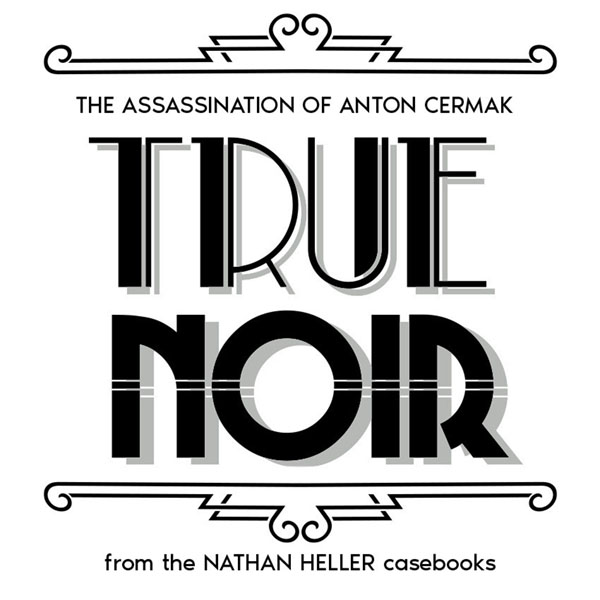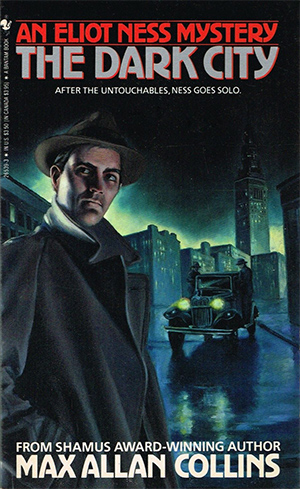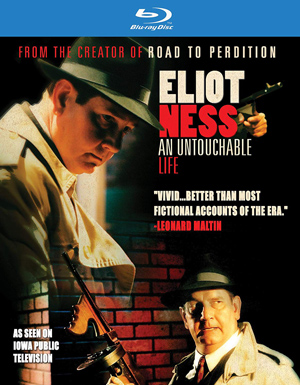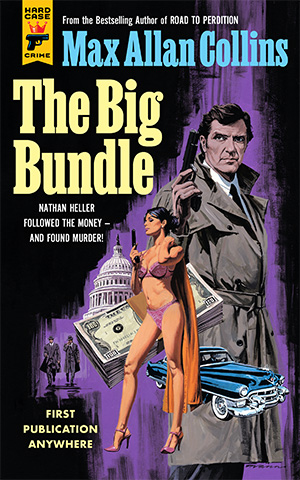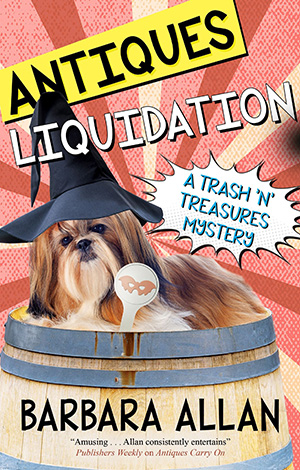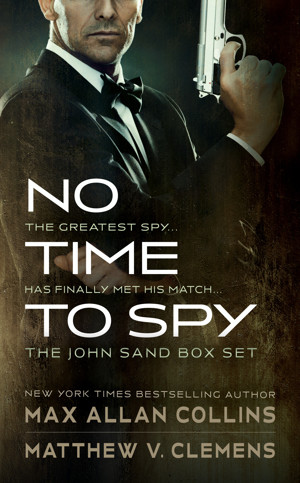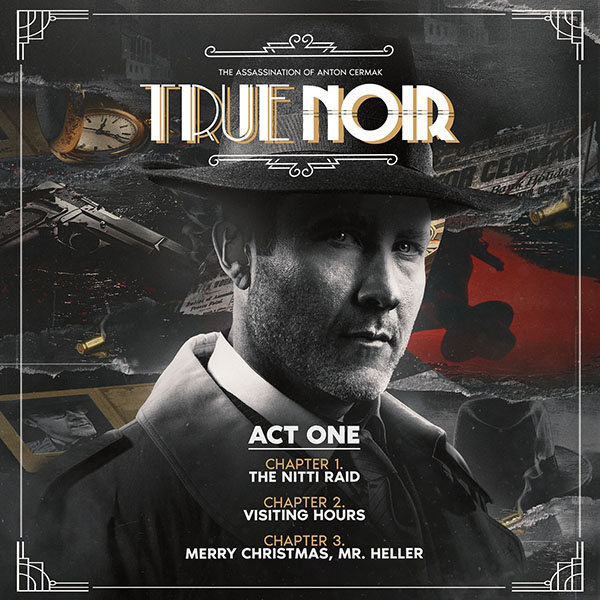
Yes, boys and girls, dads and moms, True Noir: The Assassination of Anton Cermak (from the Casebooks of Nathan Heller) has “dropped” (a term I just can’t get used to). Well, Act One of it – the first three episodes. The all-immersive, ten-episode audio drama written by me from my novel True Detective (and directed by the great Robert Meyer Burnett) is available at the usual places, though you may wish to go directly to TrueNoir.co to order the complete series.
The only major venue that doesn’t have True Noir yet, that I know of anyway, is Audible, who won’t carry it till all ten episodes have, yup, dropped.
I am knocked out by the work of a truly stellar cast, including Michael Rosenbaum’s definitive Nate Heller and David Strathairn wonderful as Frank Nitti. In these early episodes you’ll also hear Jeffrey Combs as Mayor Cermak and Katee Sackhoff as Nate’s main squeeze, Janey…among many others.
It’s difficult for me to express how rewarding and thrilling it is to hear a full adaptation of the first Nate Heller novel after all the years. A number of times True Detective was optioned for film and never happened (although Road to Perdition came close). The hope, of course, is that this may lead to a film or TV series; but this audio drama, thanks to Rob Burnett and producer Mike Bawden, is an amazing experience for me. And I think you’ll like it.
Is it any good?
Read this review from the great Bill Hunt at Digital Bits.
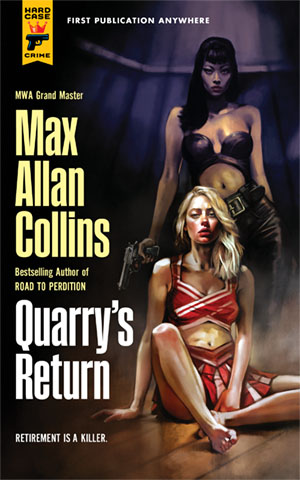
I am pleased to report that the fine web site Borg has named Quarry’s Return the Best Contemporary Crime Novel of the 2024. You can read about it below, but you’ll have to scroll down a ways.
This is the last update before Christmas, and the last chance for all for things Yuletide this year, starting with my appearance with Heath Holland on Cereal at Midnight, a YouTube staple.
I’ve done several of these shows with Heath, who is an articulate, well-informed, smartly opionated and personable host. We focus on some genre, most often, like westerns or film noir. But the idea is never to do a “best of” list, rather a “favorites” one, and in this case we look at Christmas movies that may get overlooked.
You won’t be able to order and receive the physical media of Blue Christmas before the holiday. But you are still encouraged to order it – the Blu-ray is packed with extras but the DVD looks fine (we’re not exactly Die Hard). What you can do on Christmas Eve or Day is watch it on Amazon Prime for $2.99. And it’s free on Fawesome (with commercials).
J. Kingston Pierce at The Rap Sheet has a lovely review of Blue Christmas here (and an in-depth interview with me about the making of the film and many other subjects, including the forthcoming last Mike Hammer, Baby, It’s Murder, and Return of the Maltese Falcon).
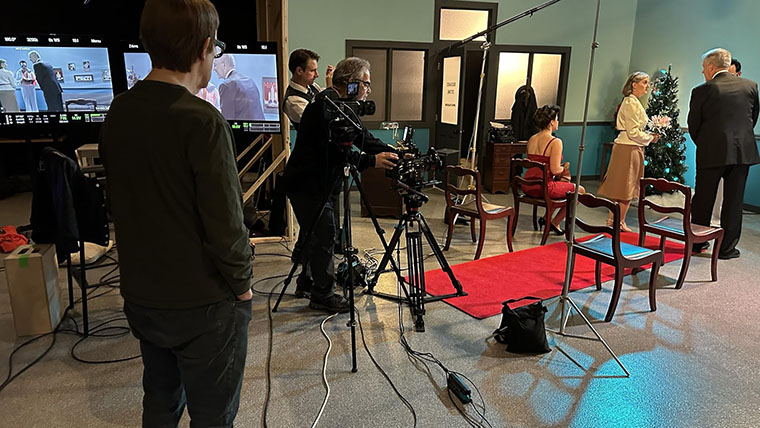
If you want to give me a Christmas gift, you can do so without spending a cent. How? If you’ve seen Blue Christmas and liked it – post a review at Amazon. We have a handful already posted there, and like the other reviews they either love the movie or hate it. A reviewer who falls in the coal-in-your-stocking category proves his point about how bad Blue Christmas is by dinging me for having the credits say “Principle Photography” instead of “Principal Photography.” Yes, that’s the kind of thing that really ruins a viewing experience.
Funny thing about that.
First, let me say that Blue Christmas is admittedly compromised by its meager budget and tight shooting schedule; the writer/director, the producer/sound designer, and the co-producer Director of Photography all worked without a pay check. (All the actors were paid.) We were limited to six days in the studio space, and the d.p. could give us only those six, and we had to work around the day jobs of a number of actors. It’s not easy making any movie for eight grand. But when the alternative is not making it, I’ll accept the limitations.
Second, I struggled – I was the one who did all the credits, with proofing from my producer – with whether to use “Principle” or “Principal.” Some of you may recall that the Quarry short film I wrote (which led to the feature film, The Last Lullaby) was called “A Matter of Principal.” Constantly during that short film’s life the title would get “corrected” to “A Matter of Principle.” But if you know the Quarry character, you’ll know he did not behave in that story as a matter of doing-the-right-thing, but to make a financial score. In other words, “Principal” in the money sense, not the ethical one.
I was aware that “Principal Photography” was more commonly used, but sometimes “Principle Photography” was – and I struggled with it. We talked about this conundrum, the producer and my wife Barb and I. I used the word as a synonym for “primary.” “Principal,” however, seems correct – it is being used in the sense of “chief” – principal photography is the main photography; second unit covers the other stuff.
So I was wrong.
Therefore, obviously, my movie sucks.
My God, there are a lot of cruel, petty people in this holly jolly world of ours. But some of us tear down and others of us create.
I’ve discussed this before, but I used to be a movie critic. I was the movie reviewer for Mystery Scene magazine in that late great publication’s early years. Later I was coerced into writing a movie review column for Asian Cult Cinema, another unfortunately defunct magazine. I came aboard on Asian Cult with the understanding I would only write about movies I liked.
I had already stepped down from the Mystery Scene slot because I had made my first film, Mommy (1994), and now knew how hard it is to make a movie. It’s brutal, all-consuming, and even on a six-day shoot (and one evening of second unit) like Blue Christmas, you spend many hours, many days, in an editing suite. And in some ways your work has just begun – getting it into film festivals, finding distribution, doing promotion.
I’m not complaining. I wrote about my attitudes where criticism is concerned a few weeks ago – that I generally regard them in an is-it-going-to-help-or-hurt way. Truth is, it’s hard even to make a bad movie (this is where some of you may say, “You should know!”). All I will add is that it’s easier to write a bad review than make any movie.
Now that Blue Christmas will largely disappear from these updates (at least till next year, although Death by Fruitcake will take its place), I want to thank the reviewers who have given so many lovely notices to our little movie, and to those reviewers who wrote mixed or even negative reviews but were civil and fair-minded about it.
Here’s one of the good ones from Russell Trunk’s online Exclusive Magazine, written by Anne Carlini:
And I am genuinely glad I did as Blue Christmas (which is based on the novella A Wreath For Marley, which was written by director Max Allan Collins) is a rather delightfully shot, acted, and scene-set movie that harms no one and is a pure unadulterated little gem to behold this holiday season.
Virtually engaging from the off, or at least once the opening holiday drinks scene has set the scene, sure it meanders and feels unfocused at times, but then it clicks right back into place very nicely; very effortlessly.
Shot at Muscatine Community College, Collins’ alma mater, yes, of course, you can see where most of the low budget went when certain scenes are filmed, but for the most part you allow such things to waft over you.
Already a top competitor to become one of my favorite Christmas movies to turn to each holiday period, the way it occasionally uses the lens distortion at the edges of the screen to emphasize the severity of the dialogue at its center (instead of changing focus depth) is a genuine masterstroke also.
Here’s another nice one.
And another.
Here’s a three-star review (and glad to get it).
And one more.
I don’t usually reprint fan letters (not that I get that many), but I asked the writer of this one, Chris Dingsdale, permission to use it here.
Thought I would take a few moments to say how much I enjoyed the
Blue Christmas Movie which arrived in the UK from the US last week.I simply love the original tale – a perfect synthesis of two genres. Really what more can I say?
While
A Christmas Carol seems to be about forgiveness and change, Blue Christmas (to me anyway) tells us not to let the past define you but use it to learn and move forward. Wonderful.Actually I read the tale first some years ago in an Otto Penzler compilation; this was exactly the message I needed to hear. I re-read the story every year without fail.
When I read on your website how the story came about I was thrilled to find that it meant a lot to you as the author – there is emotion and feeling in every line, Max.
The Movie was similarly great. It was a joy to read and follow the production on your site. I loved your verve and enthusiasm in making the Movie (and I’m sure that you didn’t relate much of the bad times and frustration!).
Everyone was great – but a special call out to Rob Merritt (is it me or did he make Richard a more beneficial character in his performance?) and Alisabeth Von Presley – that lady has presence and charisma in (Sam) Spades.
The DVD is excellent, not listened to the commentary yet nor the feature about some writer from Muscatine, Iowa (apparently he’s pretty good?).
I am in Florida and Vegas for Christmas and will pick up my
Encore for Murder DVD from a friend (I couldn’t wait for Blue Christmas – had it shipped to the UK – lol! )I’ll sign off by saying that I really love your work, Max, and recent times have been an absolute gift – the Ms Tree Casebooks, Nolan Reprints (loved
Skim Deep!) etc etcI am a longtime Nathan Heller fan (one day the world will wake up and say – “have you read these books – this is literary magic in front of your eyes!”).
Merry Christmas to you and your family, Max – hope you all have a terrific festive season and please take a moment to reflect on how much your work means to so many people – I (and thousands like me) cannot imagine what it takes to make career from being creative.
Luckily writers like you do it for us readers. You are a creative tour de force, sir.
One of my favorite reviewers, Ron Fortier, periodically goes back and picks up on something I did a few years ago. Here he writes about The Hindenburg Murders, a book I have fond memories of because its hero detective is the creator of the Saint, Leslie Charteris, one of my favorite authors in my adolescence, reflecting an early interest in mystery and crime fiction.
Here’s a nice review of Eliot Ness and the Mad Butcher by Brad Schwartz and me.
Finally, here’s a fine write-up about the recent collection, Ms. Tree: Heroine Withdrawal by Terry Beatty and me. I am so grateful to Titan and Hard Case Crime for collecting the complete Ms. Tree like this.
By the way – Merry Christmas (and Happy Hanukkah).
M.A.C.


